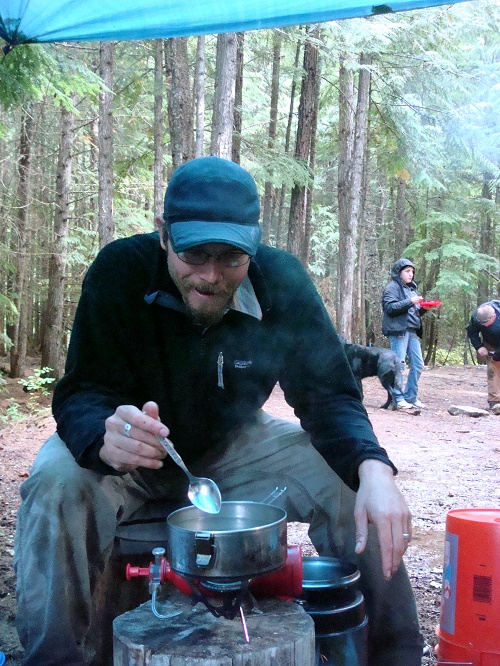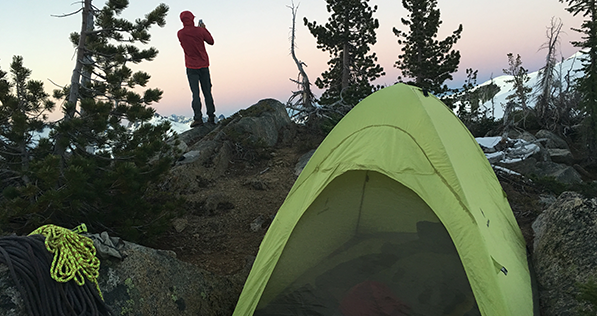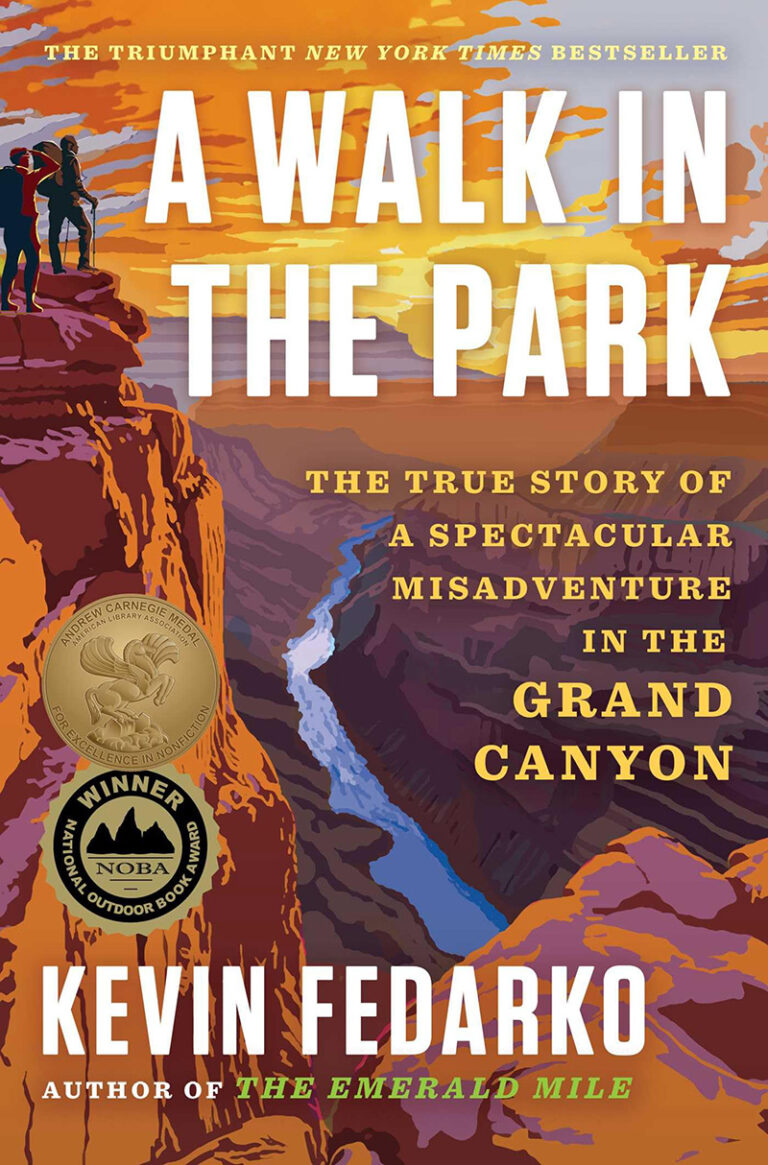Camping is one of those simple, all-American activities that’s gotten way too complicated in our high-speed, high-tech modern world. Gear is great for getting you out for a safe and satisfying adventure into the wild, but you don’t need a Patagonia shopping spree or even a Cabela’s catalogue to outfit yourself for an old-school camping trip. In many ways, our camping forefathers were more in step with the spirit of sustainability than many self-styled sustainability gurus clad in recycled pop bottle fleece packing organic energy bars and solar chargers for their iPod’s, GPS units, and other gadgets. Fortunately, there’s an easy solution-keep it simple.
The sweetest joy of camping out is in the subtle interactions with the world around you, whether you notice you’re noticing it or not. From the irate squirrel that wakes you up at 4:30 in the morning to the creek gurgling softly outside your tent, taking part and being present in it all-the plants, birds, bugs, sun, sky, air and water buzzing around you-is an experience waiting to be had by anyone with a few bucks and the will to spend the night outside.
Finding that balance between gear junkie and old-school dirt bag is easier than you might think too, and we’ve assembled some tips to prove it. Make smart, sustainable gear choices. Save gas and time by getting to know your own back 40. Utilize modern knowledge about the adverse impacts of your activities and product choices. And most important, get out there and have some fun this summer.
Gearing Up
The more superfluous the gear, the less time you’ll spend doing what you stepped outside for in the first place-getting back to nature, reconnecting, or whatever you want to call that Zen-like state that hits you after a day of peaceful living in the woods. Keep it as simple as possible for whatever activities you’ll be doing. Save money and budgeting stress by only buying the things you really need to be comfortable and safe. Look for recycled gear at Mountain Goat Outfitters, Mountain Gear or at REI scratch & dent sales. Or try thrift stores and garage sales for stoves, chairs, tables, lanterns, coolers, backpacks, cast iron cookware and other camping staples.
The Spokane Mountaineers’ recommended “13-Essentials” (see sidebar) is a good example of the kind of stuff you might need for roaming beyond the boundaries of your camp (www.spokanemountaineers.org). Field guides for birds, plants, trees, rocks, and wildlife are also an excellent way to learn a little something about your new home away from home.
Keeping it Close to Home
There are so many incredible campgrounds, primitive campsites, and trailheads within a few hours of Spokane that it would take a lifetime to experience them all. Do your homework with guidebooks (Rich Lander’s 100 Hikes in the Inland Northwest is basically the hiker’s bible for our region) and maps-take some pride in getting to know the land and its mountains, creeks, rivers and lakes before heading out. Look for destinations where you can ditch your rig and bike, or hike from camp to several nearby trails or other attractions. Campgrounds at Sullivan Lake, Priest Lake, Lake Pend Oreille, along the Lochsa and St. Joe Rivers, the Methow Valley area, the Blue Mountains, Kettle River Range, or just about anywhere in B.C. offer such park and play possibilities.
Making Camp
Campgrounds and established camps are usually there for a reason-use them and their amenities, like tables, fire pits, and toilets, rather than forging out on your own. Choose camps away from water sources, wetlands, and game trails-being close to nature shouldn’t include harassing wildlife or fowling pristine waters. Consider skipping the campfire (especially during wildfire season) and enjoy the stars you never see from home (constellation guidebooks are great for the celestially challenged). Take the time to pick up after yourself when you break camp. Strive for the “Leave No Trace” ideal of tricking others into thinking you’d really never been there (www.lnt.org).
Greening Your Camp Kitchen
You don’t need a hand-woven hemp picnic basket full of gourmet goat cheese and Californian wine to feel like you’re having an organic outdoor eating experience. Making your camp kitchen a more sustainable affair simply takes a little thoughtful planning. With farmers’ markets sprouting up all over the place, there’s really no excuse not to fill your cooler with fresh, local foods. Gas stoves or even solar ovens (see Green Camping Gear) for cooking save your pots and pans unnecessary charring from open fires and release less CO2 into our warming atmosphere. Bring along leak-proof buckets or bins for recycling what you can-use a smaller, sealable container to compost food waste and “micro trash” like crumbs and other morsels that attract ants and rodents. Keep a clean camp by using biodegradable soaps and a dishpan away from water sources. Your food and kitchen goods should always be locked up in your vehicle or hung appropriately in a tree at night to avoid attracting bears (www.insightwildlife.com/bearsafe.htm).
Backcountry Hygiene
Low-impact outdoor living might mean leaving behind a few polluting products and bad habits. One of the most destructive and disgusting wild land phenomenons is the proliferation of stinking piles of human waste and toilet paper. Proper outdoor excrement etiquette is a must. There are many humorous and informative books on the subject, but the basic principles are simple: use developed toilets if they’re available or locate a spot away from water sources, trails, and camp sites to dig your hole (several inches deep). Bury your waste and paper or burn your TP if fire danger is low. Bringing along your own toilet in undeveloped, pristine areas is a good idea. Boating catalogues sell nice portable ones. Or look into making your own bucket-based composting travel toilet (check out The Humanure Handbook for ideas).
Soaps and cosmetics can also unnecessarily fowl your camp with chemicals and attract pests. Choose bio-degradable soaps, such as Dr. Bronner’s, and leave the perfume and lotions behind unless you want to smell like an edible flower arrangement to resident camp bears. Many hardcore outdoor types scoff at non-toxic insect repellant alternatives, but wearing long clothing along with DEET-free bug juice works just fine in most situations you’ll encounter in our neck of the woods.
Exploring Beyond Your Camp
For some, camping is an excuse for excessive consumption of pre-packaged, over-processed “food” and drink. People planted in lawn chairs ringing smoldering campfires, beverage in hand, is a common sight at campgrounds on most major holidays. This breed of camper would be perplexed by the concept of the recommended 13 outdoor essentials (ain’t there only 12 beers in a half-rack?), repulsed at the thought of dragging their ass up the side of a mountain on foot. When did camping become a couch potato sport? Help reclaim the spirit of camping-get off that lawn chair and do something.
Camping is at its best when camp is reserved for eating, sleeping, and relaxing after a day exploring the wild world around you. So get out there and root around, fall in a creek, hike those trails, climb a tree, catch a fish, have yourself some kind of an adventure. And when you’ve done all that, head back to camp and kick back-you will have earned it.
Before packing up and heading home, consider giving something back to the place that just treated you so well. Most of our campgrounds and trails suffer from neglect and abuse. Stop by and ask the local ranger station what you can do to help. Pulling invasive weeds, picking up trash and toilet paper wads, maintaining trails, there is always plenty of work to be done in the woods.
THINGS NOT TO BUY USED
- Water Purifier. It’s not worth gambling with your health, especially if you’re in the backcountry on an extended trip.
- Stoves. If you must buy a used stove be prepared to borrow from friends from time to time, or learn how to cook over the coals. Also, be sure to order a new repair/maintenance kit and learn how to fix the thing.
- Boots. Used boots are generally not a good idea. Boots, when worn for a while, begin to mould to a particular person’s feet, which may cause your feet some grief. Used boots, if not cared for properly, can also begin to mold, rot, stink, etc.
- Sleeping Bags. While used sleeping bags can work fine, be prepared for possible social alienation and romantic rejection because of them. Besides coming pre-greased w/ someone else’s sweat, oil, and dirt, used bags will likely have lost some of their warming power.
With the summer hiking, climbing and Fall season coming on, here is a quick review of those often-mentioned items known as the “13 Essentials” (not including duct tape and WD-40)!
- Extra Food and Water (emergency packet of high-energy food, minimum of 1 quart water).
- Extra Clothing to keep you warm and dry.
- Matches in a waterproof container with a striker.
- Fire Starter (candle, paste, or other commercial starter).
- Map (topographic map of the area).
- Compass (e.g., Silva-type with a plastic baseplate, with 2 markings, for orienting compass to map).
- Flashlight (or headlamp, with extra bulb and batteries).
- Sun Protection (sunglasses with 98-100% UV protection, sunscreen with a sun protection factor of 15+, lip balm).
- Signaling Device (whistle and/or mirror).
- Pocket Knife.
- Emergency Shelter (e.g., tarp, space blanket, or tube tent).
- First Aid Kit.
- Toilet Paper and Trowel.
(List reprinted courtesy of the Spokane Mountaineers.)















